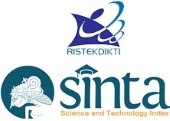Profile of The Visitors' Knowledge Related to Disasters at Kuta Mandalika Beach, Central Lombok Regency
Abstract
Abstract
Kuta Mandalika Beach in West Nusa Tenggara Province, as one of the tourist destinations vulnerable to disasters, requires a good level of disaster preparedness among its visitors. This study aims to determine the disaster knowledge of visitors to Kuta Mandalika Beach. The data collection technique was conducted through a survey using an instrument in the form of a questionnaire. The population of this study is an infinite population. The sampling technique was carried out by convenience with a total of 487 respondents. Respondents in this study were aged between 17 and 55 years who had visited Kuta Mandalika Beach in the last five years. The research instrument was a questionnaire consisting of 46 questions based on a Guttman dichotomous scale, which measured general knowledge about disasters, recognition of disaster signs, and appropriate emergency response actions. The results showed that most visitors had a high level of disaster knowledge, especially regarding types of disasters and identification of natural warning signs. Nonetheless, some respondents showed moderate to low awareness, especially in determining appropriate actions in the event of a disaster. The study also revealed that education level and age were found to correlate with visitors' disaster knowledge.
Abstrak
Pantai Kuta Mandalika di Provinsi Nusa Tenggara Barat, sebagai salah satu destinasi wisata yang rentan terhadap bencana, memerlukan tingkat kesiapsiagaan bencana yang baik di kalangan pengunjungnya. Penelitian ini bertujuan untuk mengetahui pengetahuan kebencanaan para pengunjung Pantai Kuta Mandalika. Teknik pengumpulan data dilakukan melalui survei dengan menggunakan instrumen berupa angket. Populasi penelitian ini adalah populasi infinite. Teknik penentuan sampel dilakukan secara convenience dengan total responden sebanyak 487. Responden dalam penelitian ini berusia antara 17 hingga 55 tahun yang pernah berkunjung ke Pantai Kuta Mandalika dalam lima tahun terakhir. Instrumen penelitian berupa angket yang terdiri dari 46 pertanyaan berdasarkan skala dikotomi Guttman, yang mengukur pengetahuan umum tentang bencana, pengenalan tanda-tanda bencana, dan tindakan tanggap darurat yang tepat. Hasil penelitian menunjukkan bahwa sebagian besar pengunjung memiliki tingkat pengetahuan bencana yang tinggi, terutama mengenai jenis-jenis bencana dan identifikasi tanda-tanda peringatan alam. Meskipun demikian, sebagian responden menunjukkan kesadaran yang sedang hingga rendah, terutama dalam menentukan tindakan yang tepat saat terjadi bencana. Temuan ini juga mengungkapkan bahwa tingkat pendidikan dan usia ternyata berkorelasi dengan pengetahuan kebencanaan pengunjung.
Keywords
Full Text:
PDFReferences
Akbar, M. A., Rahmafitria, F., & Nurazizah, G. R. (2020). Analisis usaha pariwisata dalam menghadapi risiko bencana alam di Kecamatan Lembang. Journal of Indonesian Tourism, Hospitality and Recreation, 3(2), 177–187.
Baihaqi, M., Salahuddin, M., Nurrahmah, N., Nurhilaiati, N., & Nasution, D. S. (2023). Earthquake, COVID, and the Economic Survival: How Tourism Entrepreneurs in Lombok Survived During the Double Disaster. Journal of Environmental Management and Tourism, 14(6), 2596.
Budiatiningsih, M., & Rosyidie, A. (2022). Profil sadar bencana pengunjung kawasan wisata rawan bencana gunung merapi di Kabupaten Sleman, DIY. JUMPA, 9, 287–308.
Chan, C. S., Nozu, K., & Zhou, Q. (2021). Building destination resilience in the tourism disaster management process from the past experiences: The case of the 2018 Hokkaido Eastern Iburi earthquake in Japan. Tourism Recreation Research, 47(5–6), 527–543.
Danzi, L., Orchiston, C., Higham, J., & Baggio, R. (2024). Tourism disaster management: A social network analysis of nature-based destinations in Aotearoa New Zealand. Journal of Travel Research, 00472875241268623.
Dewi, S. N., Khadijah, U. L. S., & Munajat, E. (2021). Gambaran tingkat pengetahuan masyarakat generasi Y mengenai aktivitas wisata trekking. Journal of Indonesian Tourism, Hospitality and Recreation, 4.(2), 201–212.
Dyahati, D. B., Syaufina, L., & Sunkar, A. (2020). Disaster-Aware tourist development strategy in Puncak Areas Bogor District West Java Province. Jurnal Pengelolaan Sumberdaya Alam dan Lingkungan), 10(4), 639-649.
Estevão, C., & Costa, C. (2020). Natural disaster management in tourist destinations: A systematic literature review. European Journal of Tourism Research, 25(2020), 1–17.
Fauziyah, A. R. S., Sugandi, D., & Ruhimat, M. (2022). The role of disaster knowledge in the preparedness of students in West Bandung Regency. IOP Conference Series: Earth and Environmental Science, 1089(1).
Filimonau, V., & De Coteau, D. (2020). Tourism resilience in the context of integrated destination and disaster management (DM2). International Journal of Tourism Research, 22(2), 202–222.
Gulo, E. R., & Koestoer, R. H. S. (2024). Comparison of coastal tourism destination management against natural disasters of New Zealand and Indonesia. ASEAN Natural Disaster Mitigation and Education Journal, 1(2), 78–90.
Hargono, A., Artanti, K. D., Astutik, E., Widodo, P. P., Trisnawati, A. N., Wardani, D. K., & Lioni, E. (2023). Relationship between disaster awareness and disaster preparedness: online survey of the community in Indonesia. Journal of Public Health in Africa, 14(9), 1–8.
Hatibe, A., Salam, A., Ali, M., & Gustina. (2021). The effect of disaster knowledge and public attitudes on the preparedness to face landslide disaster. Journal of Physics: Conference Series, 1760(1).
Islamy, N. (2019). Analisis sektor potensial, dapatkah pariwisata menjadi lokomotif baru ekonomi Nusa Tenggara Barat? Journal of Indonesian Tourism, Hospitality and Recreation, 2(1), 1–10.
Liu, L. W., Pahrudin, P., Tsai, C. Y., & Hao, L. (2024). Disaster, risk and crises in tourism and hospitality field: A pathway toward tourism and hospitality management framework for resilience and recovery process. Natural Hazards Research, May.
Nair, B. B., & Dileep, M. R. (2020). A study on the role of tourism in Destination's disaster and resilience management. Journal of Environmental Management & Tourism, 11(6), 1496-1507.
Pradjoko, E., Setiawan, A., Wardani, L., & Hartana. (2021). The impact of mandalika tourism area development on the Kuta village, centre Lombok, Indonesia based on tsunami hazard analysis point of view. IOP Conference Series: Earth and Environmental Science, 708(1).
Rindrasih, E., Ratminto, Effendi, K. C., & Silviani, D. (2024). Expert perspectives on disaster risk reduction strategies in the tourist area of Borobudur-Yogyakarta-Prambanan in Indonesia. Progress in Disaster Science, 24(January), 100379.
Sekartaji, D. A., & Mei, E. T. W. (2023). The effect of disaster knowledge on community preparedness in dealing with liquefaction disaster in Palu City, Central Sulawesi. IOP Conference Series: Earth and Environmental Science, 1233(1).
Widodo, E., & Hastuti, H. (2019). Riwayat aktivitas gunung Merapi: Potensi dan ancamannya bagi sektor pariwisata. Geomedia: Majalah Ilmiah dan Informasi Kegeografian, 17(1).
Wulandari, F., Budijanto, B., Bachri, S., & Utomo, D. H. (2023). The relationship between knowledge and disaster preparedness of undergraduates responding to forest fires. Jamba: Journal of Disaster Risk Studies, 15(1), 1–9.
DOI: https://doi.org/10.17509/jithor.v8i1.76238
Refbacks
- There are currently no refbacks.

This work is licensed under a Creative Commons Attribution-ShareAlike 4.0 International License.
eISSN : 2654-4687
pISSN : 2654-3893
This work is licensed under Creative Commons Attribution-ShareAlike 4.0 International License















